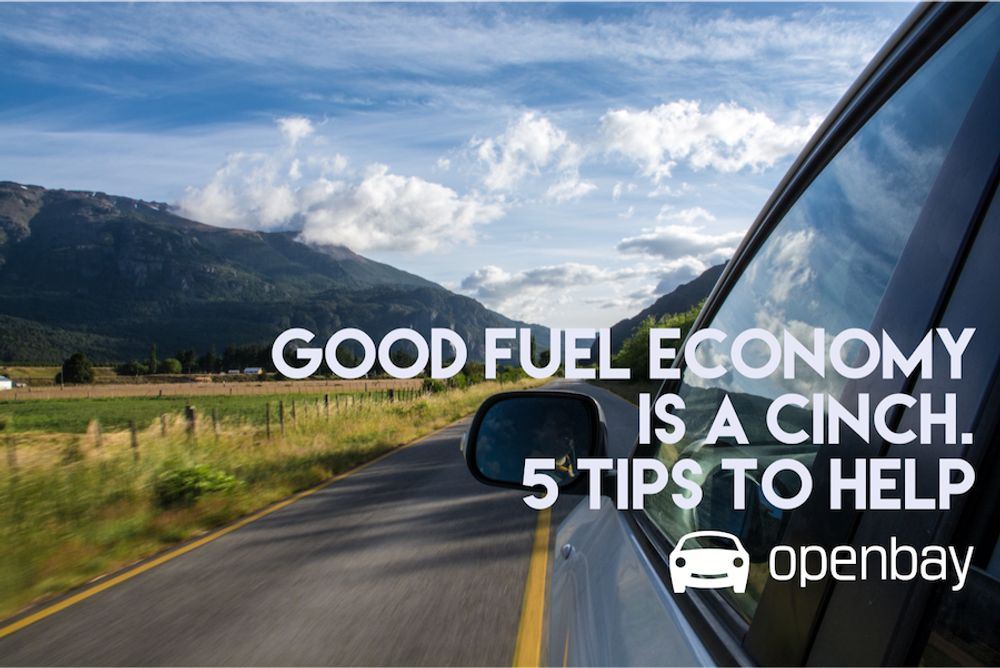The price of gas used to be a relatively negligible expense. Cheap gas, along with stunning landscapes, has contributed to the popularity of the great American road trip. Whether you’re motivated by fluctuating gas prices or by the environment, it pays to understand ways to increase your fuel economy. Here are some tips to help, short of trading in your V8 for a Prius.
5 Tips to Improve Fuel Economy (C-I-N-C-H)
1) (C) Cut Resistance: Air & Weight
If you routinely forget to empty your vehicle of bulky items, or if you’re sporting a bicycle or luggage rack when it’s not in use, it’s time to streamline. Think of those exterior mounts and piles of junk as parachutes, or anchors slowing you down.
Roll up your windows. Less wind resistance will help your vehicle’s aerodynamics, meaning more miles in your tank.
2) (I) Inflate Your Tires
According to the Department of Energy, “underinflated tires not only waste fuel but also pose serious safety risks.” The DoE notes that properly inflated tires increase fuel efficiency by 0.6-3%. They also improve vehicle handling and safety.
Tire pressure most affects fuel economy at lower speeds, likely because tire pressure increases at highway speeds. Make a point to check and correct your tire pressure each month, or as you complete regular vehicle-related tasks, like washing your car.
3) (N) Try Nitrogen
According to the New York Times, “Nitrogen seeps out of tires more slowly than oxygen, meaning the tires maintain the proper pressure for longer periods of time.”
If you’re a slave to your tire gauge, nitrogen may not be for you, but if you don’t know how to check your tire pressure, after years of driving, ask your auto-repair shop if it’s right for you.
4) (CH) Chill Out
The U.S. Department of Energy notes that aggressive driving “can lower your gas mileage by 33% at highway speeds and by 5% around town.”
The harder you drive, the more gas you’ll burn. Gunning it out of stoplights, and hard braking, followed by hard acceleration are all surefire ways to burn through your gas tank. If you’re driving aggressively because you’re in a rush, leave for work/meetings earlier (that might lower your blood pressure, too!).
Anticipate what’s coming down the road, and drive accordingly. You shouldn’t need to jam on the brakes and gas during a routine car ride, and your passengers will thank you for a smoother ride.
According to the Department of Energy, “when you drive fast, you’re displacing more air and, again, making your engine work harder. Driving moderately can increase fuel efficiency by as much as 33 percent.” Ya heard that, lead foot?
5) Extra! Get an App
The Department of Energy notes that drivers using “driver-feedback devices” (think along the lines of a FitBit for your car) used to save fuel can increase gas mileage by up to 10%.
The newly released TrueMotion app scores drivers based on hard braking, hard acceleration and high speed, all of which contribute to poor fuel economy. It’ll let you track your family’s habits, as well as your own. Score one for household safety and budget.
When it’s time to fill up, head to the most economical station near you, using the GasBuddy app. In addition to locating cheap gas near you, it can help you to calculate road-trip costs.
Worth a Note:
Following a tire rotation or installing a set of new tires, your fuel economy may decrease slightly. Why? Tires’ contact with the road means more grip, or friction. An increase in friction counts as resistance. But not to worry – your safety is far more important than the barely noticeable loss in gas mileage.

